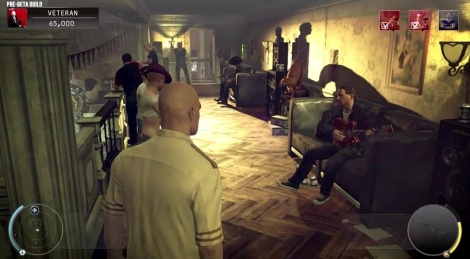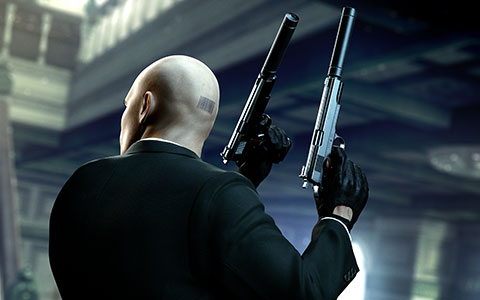
Grand Theft Auto V, commonly shortened to GTA V, is an upcoming open world action-adventure video game being developed by games developer Rockstar North, and published by Rockstar Games. The game will be the first major title in the Grand Theft Auto series since Grand Theft Auto IV (2008), and a continuation of the fictional universe that was introduced in that game. The fifteenth game in the series overall, GTA V is to be set in fictional Los Santos in the state of San Andreas and its surronding areas, based on modern-day Los Angeles and Southern California. A rendition of Los Santos was previously featured as one of three cities in Grand Theft Auto: San Andreas, released in 2004.
According to Rockstar, Grand Theft Auto V is destined to be their biggest open world game to date. The game will concentrate on "the pursuit of the almighty dollar". A highly anticipated game, Grand Theft Auto V was officially announced on 25 October 2011. The debut trailer for the game was unveiled on 2 November 2011. The first demo of the game was revealed to press on 11 October 2012.
The second trailer of GTA V was announced on November 5 2012, and released on 14 November 2012.
GTA V is slated for release in the second quarter of 2013, for the PlayStation 3 and the Xbox 360.
Gameplay
 Grand Theft Auto V "evolves nearly every mechanic" found in previous games in the series. GTA V's world is bigger than the worlds of Red Dead Redemption, Grand Theft Auto: San Andreas and Grand Theft Auto IV combined. Areas in the game world include beachfronts, mountains, the wilderness, a "Salton Sea" region, a military base and the suburbs. The ocean floor is fully detailed and can be explored.
Grand Theft Auto V "evolves nearly every mechanic" found in previous games in the series. GTA V's world is bigger than the worlds of Red Dead Redemption, Grand Theft Auto: San Andreas and Grand Theft Auto IV combined. Areas in the game world include beachfronts, mountains, the wilderness, a "Salton Sea" region, a military base and the suburbs. The ocean floor is fully detailed and can be explored.
GTA V's single-player story is told through three player controlled protagonists. They are Michael, Trevor and Franklin, criminals whose stories interconnect as they complete missions together. During story missions, the player can switch between the protagonists as they work together to accomplish an objective; in one such mission, Michael rappels down the side of a building, Franklin provides covering fire with a sniper rifle, and Trevor controls the getaway vehicle.
 Outside of missions, the player is free to swap between the protagonists and explore the game's open world, the fictional city of Los Santos, based on Los Angeles, and its surrounding countryside, whilst viewing the games wildlife, including Coyotes, in a full fledged ecosystem. Camera zooms out to a "Google Earth-style" perspective when switching characters and then drops into wherever the chosen character is. Even when the player is not controlling them, each character will still go about their own business across Los Santos. As any of the protagonists, the player can engage in activities such as yoga, triathlons, Jet Skiing, base-jumping, tennis, golf, scuba diving or go to the gym. Each character will have unique hobbies, which can be completed with the protagonists' friends, but the dating system from GTA IV does not return. San Andreas' RPG-like player customization is also absent, but the player can customize the clothing of each character. Characters can "flick off" people and people react differently depending on the area.
Outside of missions, the player is free to swap between the protagonists and explore the game's open world, the fictional city of Los Santos, based on Los Angeles, and its surrounding countryside, whilst viewing the games wildlife, including Coyotes, in a full fledged ecosystem. Camera zooms out to a "Google Earth-style" perspective when switching characters and then drops into wherever the chosen character is. Even when the player is not controlling them, each character will still go about their own business across Los Santos. As any of the protagonists, the player can engage in activities such as yoga, triathlons, Jet Skiing, base-jumping, tennis, golf, scuba diving or go to the gym. Each character will have unique hobbies, which can be completed with the protagonists' friends, but the dating system from GTA IV does not return. San Andreas' RPG-like player customization is also absent, but the player can customize the clothing of each character. Characters can "flick off" people and people react differently depending on the area. The mobile phone introduced in GTA IV returns, but a lot of its features have been altered. The mobile phone is mainly used for activities and can also be used to access the in-game internet. There will be a "vibrant and fun" economy system, but the player won't be able to buy property as in Grand Theft Auto: Vice City. Shooting has evolved "a long way" in terms of feel and mechanics, and the melee combat is better than in previous GTA titles.
The mobile phone introduced in GTA IV returns, but a lot of its features have been altered. The mobile phone is mainly used for activities and can also be used to access the in-game internet. There will be a "vibrant and fun" economy system, but the player won't be able to buy property as in Grand Theft Auto: Vice City. Shooting has evolved "a long way" in terms of feel and mechanics, and the melee combat is better than in previous GTA titles.
GTA V will feature more vehicles than in any GTA to date, including BMXs, mountain bikes, road bikes, dirt bikes, huge variety of cars and trucks, helicopters, planes, ATVs and Jet Skis. Fighter jets also return. A scene in the second trailer shows a fighter jet firing two missiles at a helicopter, destroying it almost immediately. The cars will feel less "boatlike" than in GTA IV, they will "hold on better to the ground" and "it feels more like a racing game"
Multiplayer
According to IGN, the multiplayer modes may feature "crews" similar to Max Payne 3. The new Social Club functionality will connect play across multiple titles, starting with Max Payne 3 and GTA V. By playing both games' multiplayer, crews that the player set up in one will be carried over to the other. GTA V will let players form private crews with friends, or join public crews. Players can be a member of up to five at the same time, and completing tasks as a crew will gain experience points for the player.





















